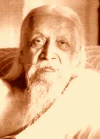| |
|
|
| |
 |What
is “Yogavashaistha” ?|Topics
discussed|Philosophical
foundations/presuppositions|Concept
of Yoga in Yogavashaistha|Yogic
Practice discussed|Concept
of Health and Disease|References|
|What
is “Yogavashaistha” ?|Topics
discussed|Philosophical
foundations/presuppositions|Concept
of Yoga in Yogavashaistha|Yogic
Practice discussed|Concept
of Health and Disease|References|
|
|
| |
 |
Traditional texts of Yoga - 3
Therapeutics
aspects discussed there in
Yogavashaistha
See
other also
|Bhagavadgita|
Tattariya Upanishad|Yogopanishads|Yogavashaistha| |
 |
|
| |
What is
“Yogavashaistha”
? |
|
| |
Yogavashaistha is the ancient text which
basically consists in the form of dialogue between Rama the pontiff of Ayodhya
kingdom Rishi Vashistha regarding the nature of reality, nature, aim and final
destination of human being, nature of the world, reason behind Unity in
diversity etc. The areas and subject material discussed in Yogavashaistha ranges
from the Yoga-Spirituality, Religion, Social norms, Yogic practices, Yogasiddis
and nature and attainment of Siddis.
As a voluminious text Yogavashaistha is said
to be originally consisted of thirty two thousands verses, but now in printed
version twenty eight thousand verses are found. What is the status of Gita in
Mahabharata the same is applicable with regarding to Yogavashaishta, which is
some times also called as Laghu-Ramayana.

|
|
| |
Topics discussed in Yogavasishtha
(relating to Yoga & Health and Disease) |
|
| |
In the central discussion which revolves round
the removing-off the skeptic mental dispositions of Rama, yogic aspects have
also been profusely discussed. Prominent among them are :
 |
Methods of Puraka,
Kumbhaka and Rechaka. |
 |
Ways and methods for
controlling of mind and tranquility. |
 |
Destruction of Adhi and
Vyadhi |
 |
Manonigraha – needs and
benifits |
 |
Realization of the
movement of Prana-Apana leads to liberation which is the stage of from all
sufferings and diseases |
 |
The seven Stages (Bhumi)
of Yoga and their characteristics |
 |
The destiny of Yogabhrasta |
 |
The falsity of creation
and essential unity of all pervading (i.e. Brahaman). |
 |
|
| |
Philosophical foundations/presuppositions of Yogavashaistha |
|
| |
 |
Yogavashaistha establishes
that the Brahman is the only Reality. |
 |
Varieties and differences
in the world are due to erroneous or incomplete knowledge of reality.
|
 |
Yoga is the potential
method for realization. |
 |
On the path of Yogic
practice, various Siddhis are also attained. |
 |
Prana-sadhana is the
potential method, through which stretching the prana in Bhrumadhya or
Brahmadha (sahasrar charka) region one realizes the final reality or Brahama
: |
प्राणाघनगतिष्वक्ष
रेचकादिप्रकल्पनम्।
प्राणापानोदयलयस्थानं
ब्रह्मा च वर्ण्यते।।
-
निर्वाणप्रकरणम्/25/2
Conceptual chain as
expressed in Yogavasistha follows like
this:
|
The cause of the body |
 |
Mind |
|
Cause of
the Mind is |
 |
Pranaspanda and Vasana (flow or activity of Prana and desires) |
|
The
cause of Pranaspanda and Vasana |
 |
Objects
and subjects |
|
The
cause of the object |
 |
Jivatma |
|
Cause of
Jivatma |
 |
Paramatma |
|
|
 |
Tattvajnana, Vasana-kshaya and Manonasha Acqisition of
Paramapada |
Table Ref.
–
मनसः
स्पन्दनं
प्राणः
प्राणस्य
स्पन्दनंमनः।
एतौ
वितरतौ
नित्यमन्योन्यं
रथसारथी।।
Y.V. 6/69/46
 |
|
| |
Concept of Yoga in Yogavashaistha |
|
| |
Yogavashaistha defines
yoga as :
“मनः
प्रशमनोपायो
योग
इत्यभिधीयते”
Means, Yoga is the method through which
tranquility and peace of mind attained. Yet another place Yoga has been defined
as of two kinds viz. Atmajnana method and Pranasamrodha
method. Atmajnana is the method which seeks the knowledge and realization of
Brahman, while Pranasamrodha is the method which is based on the Samrodba of
Prana or Pranayama. Rishi Vashistha describes this meaning of the Yoga as
“Brisham” or more appropriate meaning of the Yoga.


 |
|
| |
Yogic Practice discussed in
Yogavashaistha |
|
| |
Asanna, Pranasamrodha (Pranayama), Indriya
Nigraha (Pratyahara), Dharana, Dhyana and Samadhi. Out of the above Pranavidya
has been elaborately discussed
 The definition of Prana given as :
The definition of Prana given as :
प्राणोSयमनिशं
ब्रह्मस्पन्दशक्तिः
सदागतिः।
सबाह्याभ्यन्तरे
देहे
प्राणोयमुपरि
स्थितिः।।
 Definition of Swasthaya in terms of Prana and Apana
Definition of Swasthaya in terms of Prana and Apana
By restoring or attaining the appropriate
movement of the Prana and Apana one becomes healthy and attains the bliss.
प्राणापानगतिं
प्राप्य
सुस्वस्थः
सुखमेधते।
 |
|
| |
The concept of
disease and Health in Yogavashistha |
|
| |
“How diseases occur into the body ?” and “how
they are destroyed ?”, Rama at one place asked this question to rishi Vashistha.
Rishi explains this through the concepts of Adhi and Vyadhi. Adhi is the
Psychological disorder where mental dispositions and results into a kind of
imbalance which generates the condition of physical disease which is the Vyadhi.
Both Adhi and Vyadhi incur the sufferings, pain and pangs to the human being.
Through the treatment of drugs these Adhi and Vyadhi are cured and happiness is
attained, but Yogavashistha does not confine to this stage and adds one more
dimension as through the knowledge they (Adhi & Vyadhi) are destroyed and Moksha
is attained.
|
आधि
+
व्याधि
 |
दुःख
का
कारण |
|
|
 |
औषधियों
से
निवृत्ति
 |
सुख
की
प्राप्ति |
|
 |
ज्ञान
के
द्वारा
 |
समूल
नाश |
|
|
 |
मोक्ष |
Fig
:
depicting the concept of Adhi and Vyadhi, their causes and eradication.
Yogavashistha says that the Adhi and Vyadhi
both may simultaneously incur or they may afflict the body as the cause of each
other. Here Yogavashistha in its metaphysical terminology states about the
fundamental cause of both as ‘Ajnana’. It also enlists the causes of disease as
:
 Due to the recurrence
of the strong desires
Due to the recurrence
of the strong desires
 Ignorance
Ignorance
 Uncontrol of Chitta
Uncontrol of Chitta
 Improper food-items
etc – Kujirnata - Ajirnata
Improper food-items
etc – Kujirnata - Ajirnata
Due to above listed causes first Pranavayu
attains its improper flow and disturbs the Nadis or micro channels of the
energy of the body and onward whole Health is affected or lost.
|
आधि
से
व्याधि

|
प्रबल
इच्छा
 |
व्याधि
से
आधि
 |
वात-पित्त-कफ
का
वैषम्य
 |
|
|
प्राण-अपान
की
गति
में
प्रभाव
या
परिवर्तन
 |
 |
शारीरिक
दोषों
का
उद्भव
जिससे
 |
|
|
नाड़ियों
में
प्राण
का
असन्तुलन
 |
 |
नाड़ियों
की
विषमावस्था
 |
|
|
शारीरिक
ऊर्जा
स्तर
का
असन्तुलन
 |
 |
मानसिक
ऊर्जा
का
असन्तुलन
 |
|
|
व्याधि
या
शारीरिक
रोगावस्था |
 |
आधि
या
मनोरोगावस्था |
Fig
:
depicting the interchangeability of Adhi and Vyadi
आधयो
व्याधयश्चैव द्वयं दुःखस्य कारणम्।
तन्निवृत्तिः सुखं
विद्यात्क्षयो मोक्ष उच्यते।।
Y.V. 6/81/12
 |
|
| |
References
-
Yogavashistha (in 4 vols.),
Ed. Dr. Kanta Gupta, Nag Publishers, 1998, New Delhi
-
Sankshipta Yogavashistha,
Gita Press Gorakhapur, U.P.
-
Yogavashistha
(in two vols.), ed. Shriram Sharma Acharya, Sanskriti Sansthan, Barely, U.P.
-
Yoga Traditions
 |
|
| |
|
|